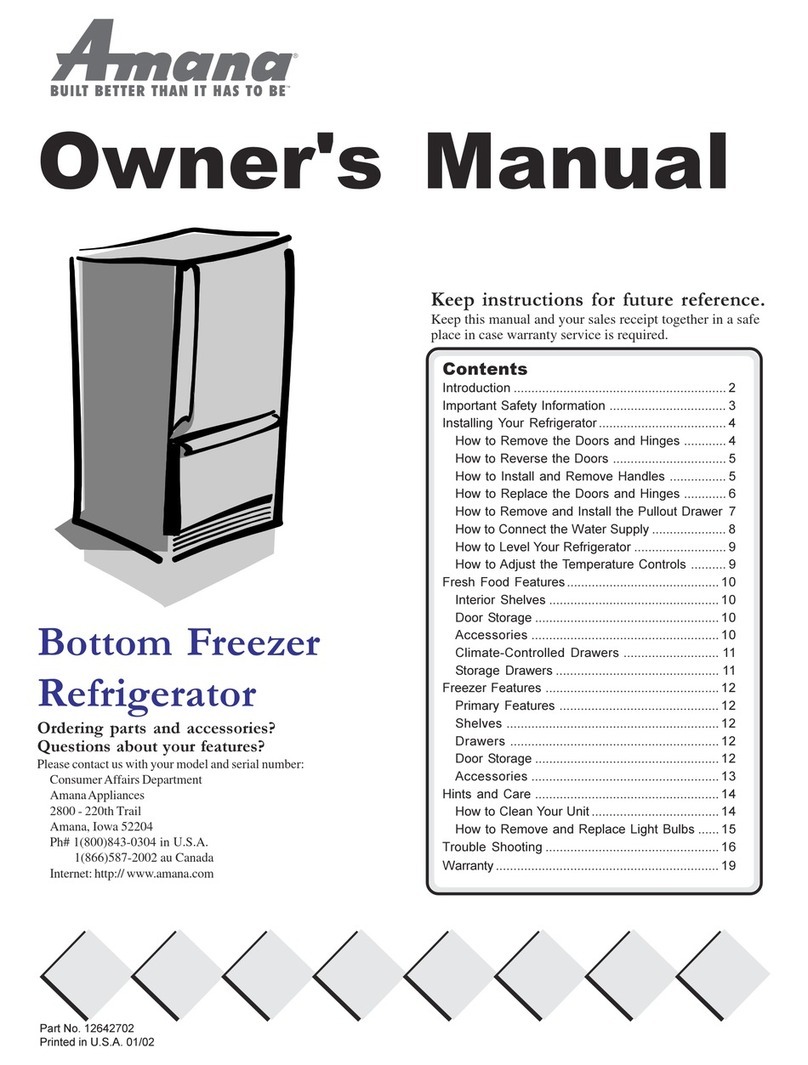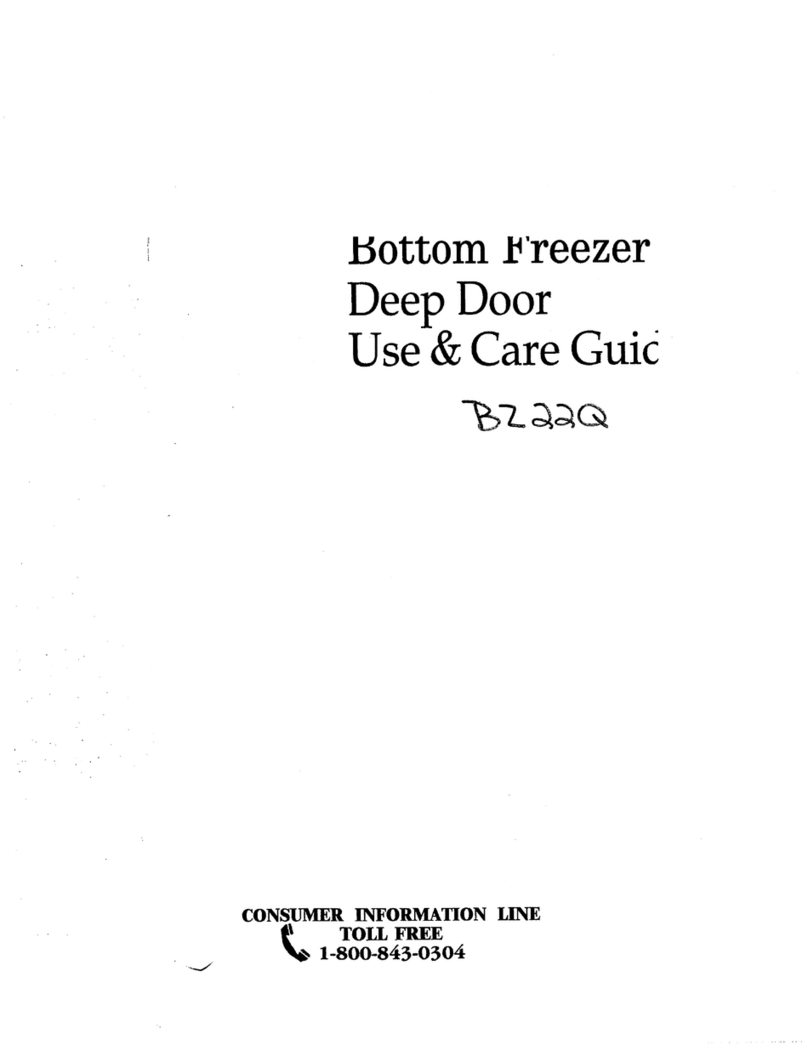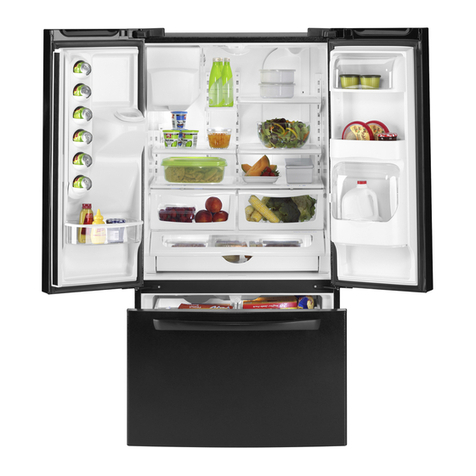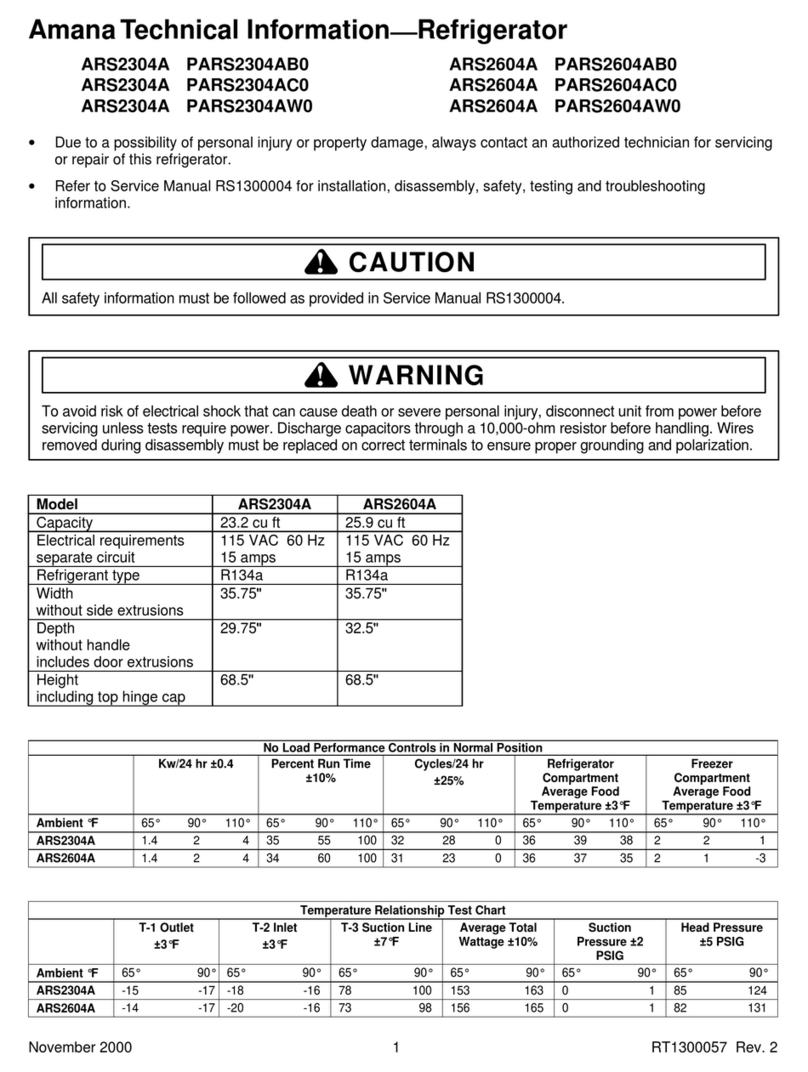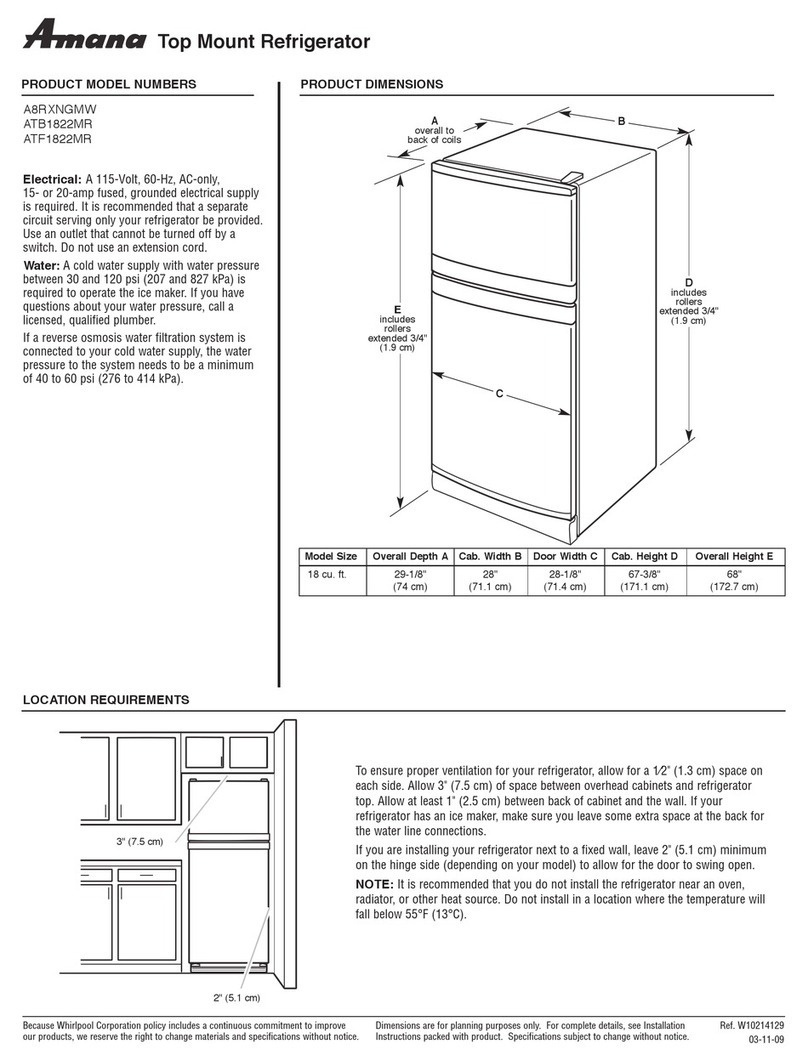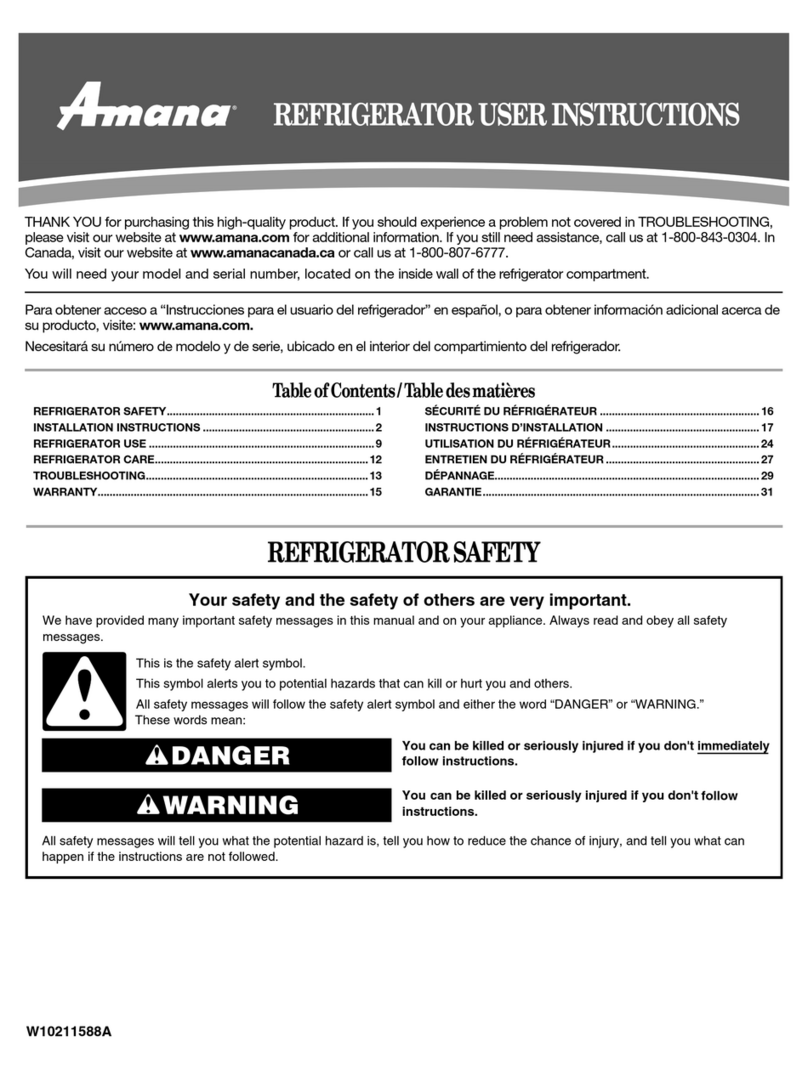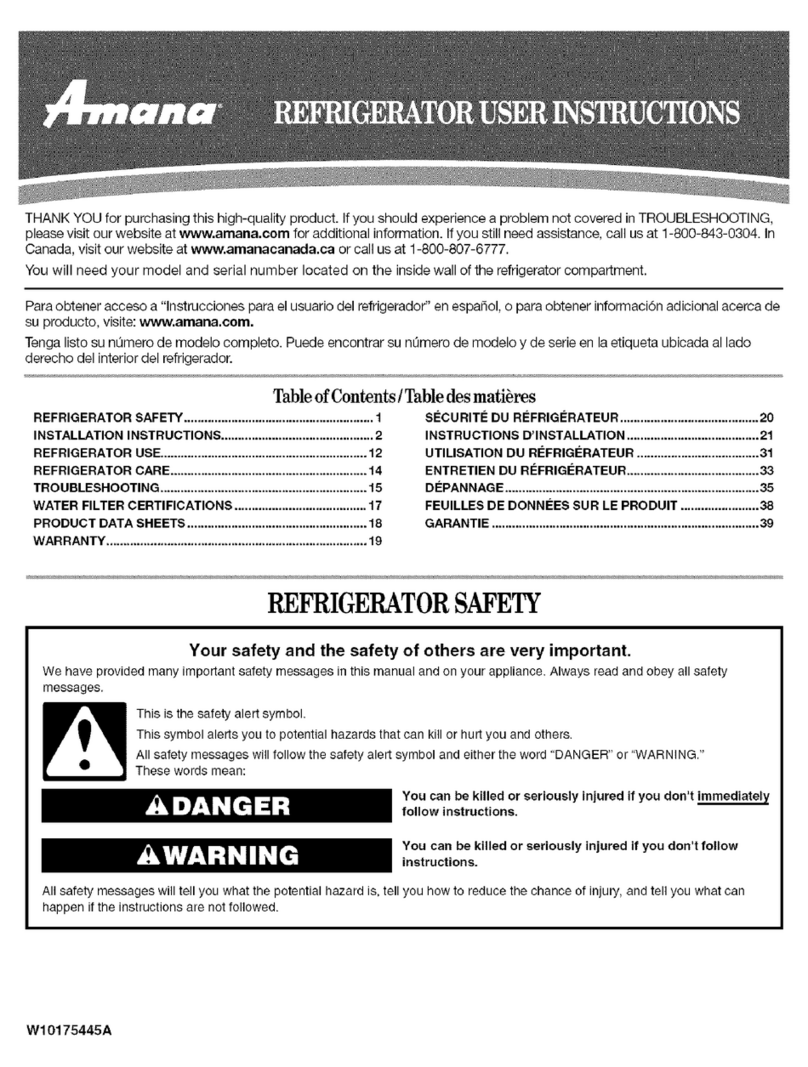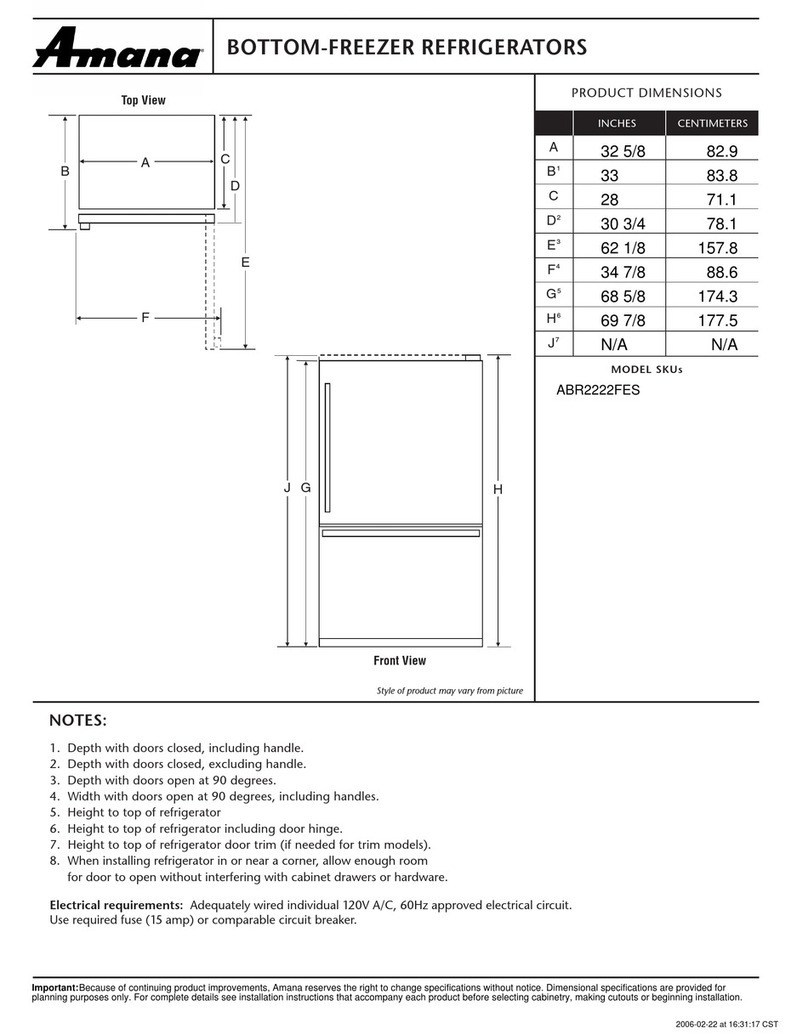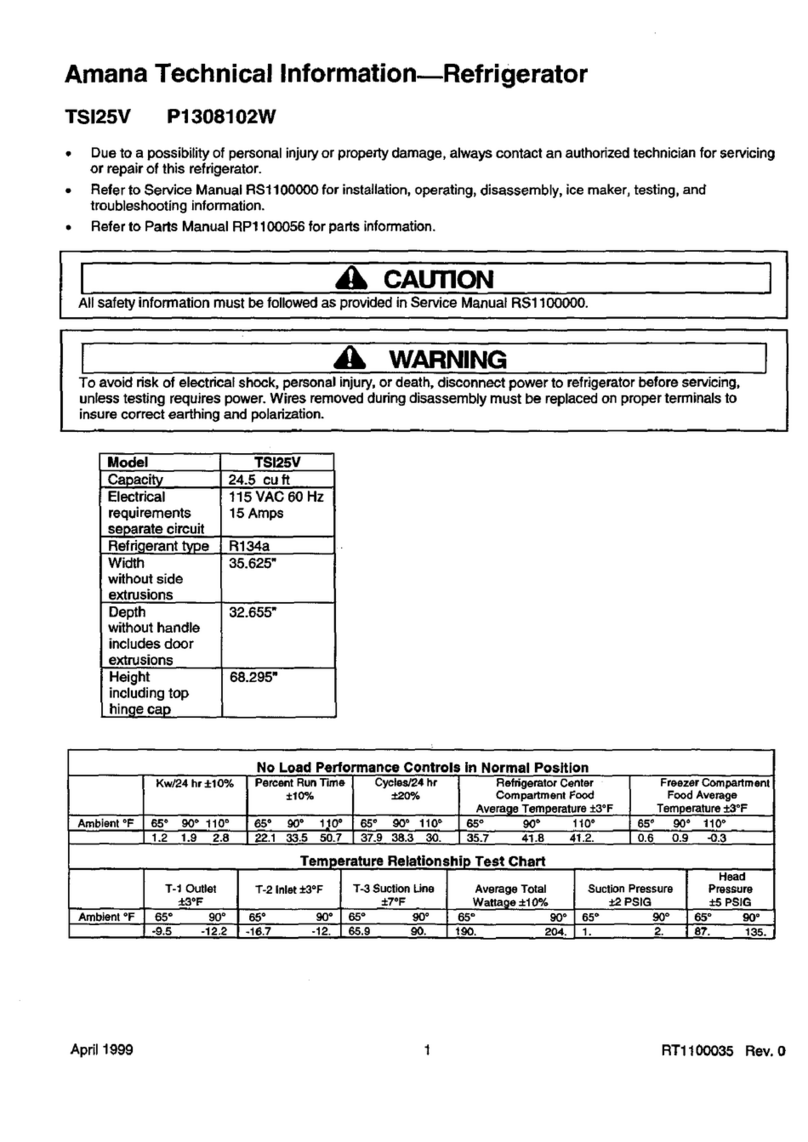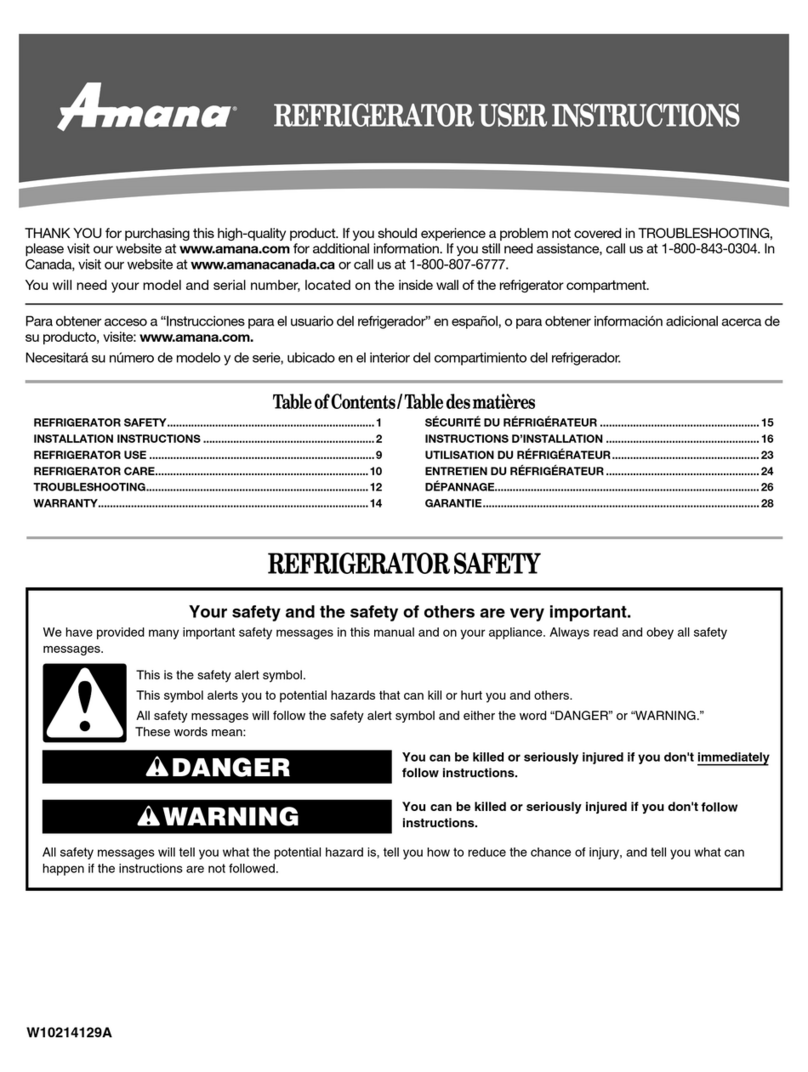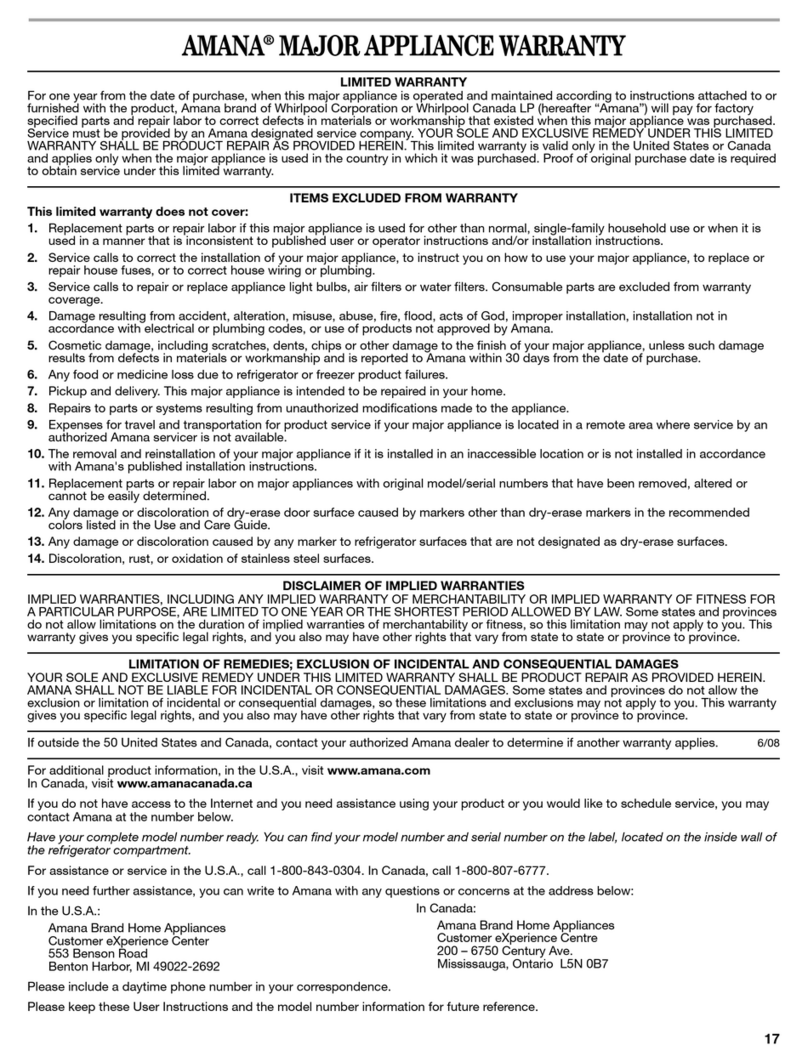
3RS1300005 Rev. 0
Important Information................................................2
Product Design..........................................................4
Component Testing....................................................5
Service Procedures .................................................10
Service Equipment ..................................................10
Drier Replacement...................................................10
Refrigerant Precautions ........................................... 11
Line Piercing Valves................................................. 11
Open Lines ............................................................. 11
Compressor Operational Test ................................... 11
Dehydrating Sealed Refrigeration System..................12
Leak Testing............................................................12
Testing Systems Containing a
Refrigerant Charge ............................................ 12
Testing Systems Containing
No Refrigerant Charge .......................................12
Restrictions .............................................................13
Symptoms.........................................................13
Testing for Restrictions .......................................13
Evacuation and Charging .........................................14
Evacuation ........................................................14
Charging...........................................................15
Refrigerant Charge ............................................ 15
HFC134a Service Information................................... 16
Health, Safety, and Handling...............................16
Comparison of CFC12 and HFC134a Properties ..16
Replacement Service Compressor............................17
Compressor Testing Procedures .........................17
Brazing ...................................................................17
Refrigerant Flow 22, 24, 26 cu. ft ..............................18
Cabinet Air Flow 24, 26 cu. ft ....................................19
Cabinet Air Flow 22 cu. ft..........................................20
Ice and Water Dispenser Diagram ............................21
Water Valves Diagram..................................................22
Typical External Sweat Pattern ..................................23
TroubleshootingChart ................................................24
System Diagnosis....................................................27
Disassembly Procedures
Refrigerator Compartment ....................................30
Upper Light Socket & Lens .................................30
Freezer Cold Control..........................................30
DefrostTimer..........................................................30
Adaptive Defrost Control ....................................30
Damper Control.......................................................31
WaterFilterAssembly.............................................31
WaterTankAssembly..............................................31
Crisper Cover and Socket ..................................31
Freezer Compartment
Freezer Light Socket ..........................................31
Auger Motor Assembly .......................................31
Auger Motor ......................................................31
Auger Motor Capacitor............................................32
Evaporator Fan Motor Assembly .........................32
Evaporator Fan Motor and Fan Blade.....................32
Evaporator Removal...............................................32
Defrost Terminator (Thermostat).........................32
Defrost Heater...................................................32
IceMakerRemoval.................................................33
Machine Compartment
Water Valves .....................................................33
Condenser Fan motor and Blade ........................33
Compressor ......................................................33
Condensate Drain Tube .....................................33
Condensate Drain Pan.......................................33
Overload/Relay..................................................34
Condenser ........................................................34
Bottom of Cabinet
Front Leveling Rollers ........................................34
Rear Leveling Rollers .........................................34
Cabinet Doors
Door Gaskets ....................................................34
Dispenser Facade (Messenger Model) ................34
Dispenser Ice Chute Door ..................................35
Dispenser Light Socket ......................................35
Dispenser D/C Solenoid .....................................35
Dispenser Water Tube .......................................35
High Voltage Board (Messenger Model) ..............35
Ice ‘N Water Systems
Troubleshooting of 5 button Dispenser ................ 36
Troubleshooting of Messenger Dispenser............ 40
Troubleshooting of 3 button Dispenser ................ 45
Appendix A
Owner’s Manual ..... .............................................A-2
Table of Contents
